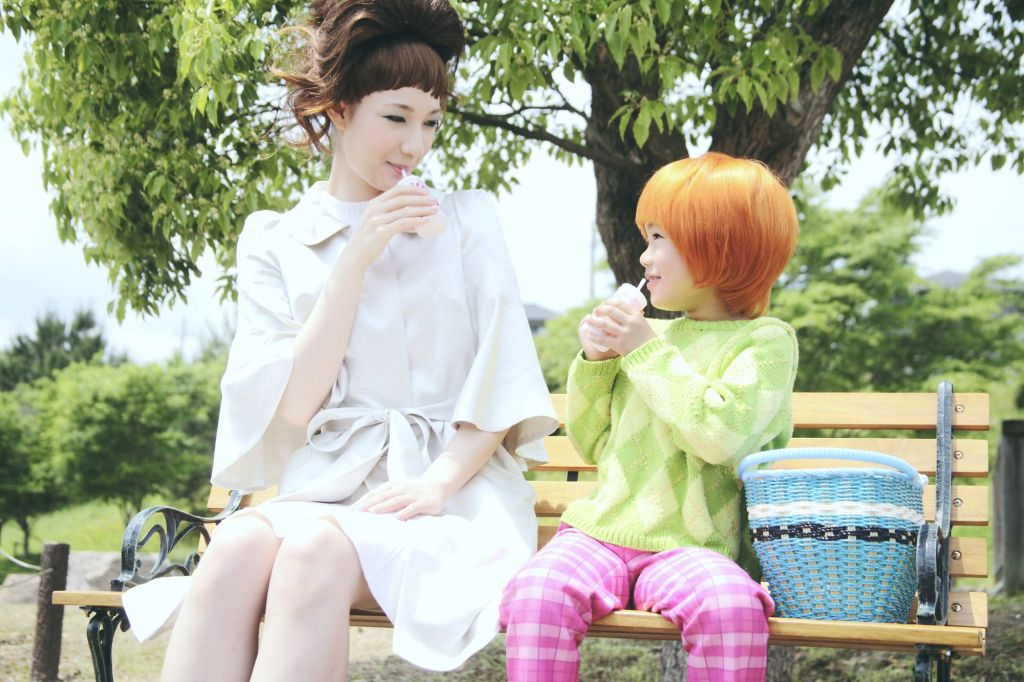By Chlotrudis Independent Film Society
Rating: 4.25 cats
Director: Yoshimasa Ishibashi
Starring: Anna Ishibashi | Eiji Okuda | Maiko | Mieko Harada | Seijun Suzuki | Takayuki Yamada

Original language title: Mirokurôze
Country: japan
Year: 2011
Running time: 90
IMDB: http://www.imdb.com/title/tt1843986/
Jason says: “MILOCRORZE: A LOVE STORY is the sort of colorful, genre-mashing flick that doesn’t just try to bowl the audience over, but practically insists on it, overwhelming the viewer with color and sound and sudden shifts until they either walk out numb or give in. And there’s no reason not to give in, as writer/director Yoshimasa Ishibashi finds ways to both pop the eyes and tug at the heart.
“Of course, the title character (Maiko) doesn’t seem to be that important at first; she’s the ethereally beautiful woman that oddly-independent seven-year-old Ovreneli Vreneligare falls for one day in the park, but soon enough she’s gone, leaving the boy with a broken heart. That’s when we meet Besson Kumagai (Takayuki Yamada), a ‘love counselor’ for young men whose hotline leads to him berating his callers and giving them questionable advice. Following his path eventually brings us to Tamon (Yamada again), a one-eyed samurai on a quest to find his beloved Yuri (Anna Ishibashi), stolen away by kidnappers four years ago. It’s only after the end of Tamon’s quest that we catch up with the now-grown Ovreneli (guess who), who encounters a familiar face while still nursing a hole in his heart.
“Though all three sections are quite something to see – Yoshimasa Ishibashi and his fellow filmmakers seldom see a frame that they don’t think could be improved by a little more color, a poppier beat, and a bit of absurdity – it’s Tamon’s segment in the middle that is Ishibashi’s and Yamada’s tour de force. Yes, the film changes styles before and after, but it shifts genres several times within this part, jumping from samurai to something contemporary to western to a stylized blending of everything without any sort of explanation other than that this genre perhaps feels most appropriate for this moment. It also features one of the most astonishing action sequences in recent memory, in which Tamon hacks his way through a brothel filled with yakuza in one long, apparently continuous shot that moves like a side-scrolling video game and continually jumps between regular speed and slow motion. It’s jokey at some points and surreal at others, but Ishibashi packs an amaing amount of activity into what certainly appears to be one continuous shot.
“The other segments are quite entertaining, too, exaggerated in different ways. Even as they deal with heartbreak, the Ovreneli Vreneligare bits are gentle, done up in bright pastel colors and with almost-whispered narration by a kind maternal voice. The Besson section, on the other hand, is loud and in the audience’s face, filled with yelling, scantily clad dancing girls, and situations that get more and more ridiculous as the skit goes on. It’s a riotous crowd-pleaser, getting the audience hopped up for the forthcoming adventure before Ovreneli Vreneligare brings them down for a gentle landing.
“Takayuki Yamada is tremendously appealing in all three segments, going all-in on three very different roles and nailing each of them. Besson Kumagai is probably the most fun, but Tamon is the one that’s really impressive, as the character undergoes several metamorphoses but always retains the same core. Ishibashi gives him (and us) a big hand in making these changes, as each segment has its own color palette, sound, and style, with even the more conventional moments seeming to have a striking, unreal air.
“Peel the enthusiasm back a little, though, and what you have left is almost an anti-love story: Ovreneli Vreneligare spends thirty years heartbroken over his first crush, Besson Kumagai repeatedly demonstrates the absurdity of grand romantic gestures, and Tamon may very well have simply been driven mad by loving and losing. There is hope within, though – as questionable as the environments can be, Ishibashi and company never deny the reality of their passion and there are moments when true happiness shines through.
“As it should. The exciting, giddy moments of this movie do not exist so that the director can crush the audience all the harder, but instead as a reminder that for all the pain love can lead to, the high points are well worth it. 4 1/4 cats
“Seen 15 July 2011 in Theatre Hall (Fantasia 2011)”
